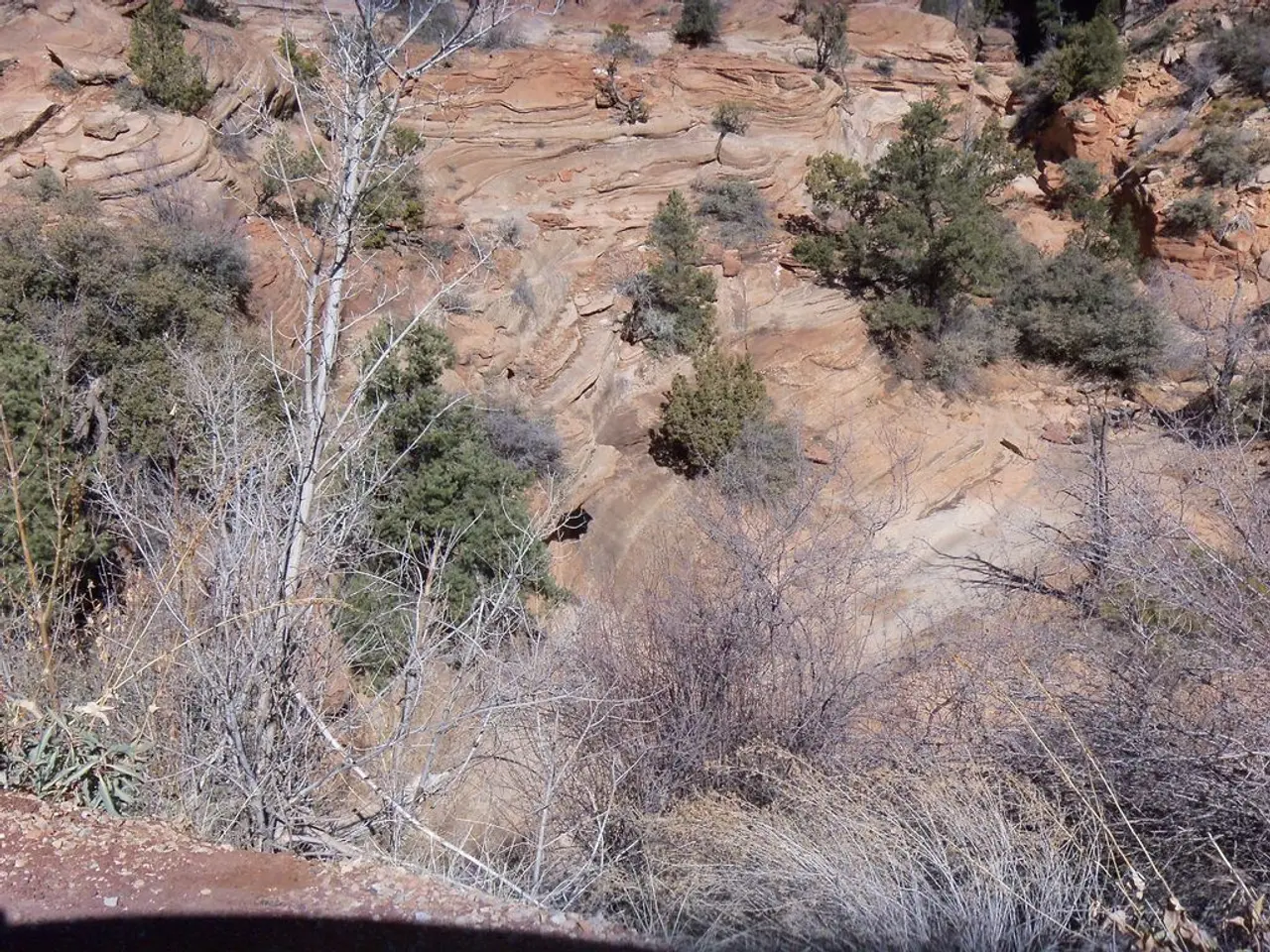Montana's Mineral Riches: Yogo Sapphires, a Local Treasure
In the heart of Montana's Little Belt Mountains, nestled within the Yogo Gulch, lies a narrow vein that has been the source of one of the world's most distinctive sapphires - the Yogo sapphire.
Discovered accidentally by a gold miner named Jake Hoover in 1895, these sapphires have since been treasured for their remarkable natural clarity, consistent cornflower blue color, and minimal need for treatment. George F. Kunz of Tiffany & Co., who identified the stones as sapphire, declared them the finest precious gemstones ever found in the United States.
The Yogo sapphires are unique in their igneous origin, unique inclusions, and distinct trace element concentrations. They are found within lamprophyre dikes, specifically in lamprophyre intrusions called dikes, such as the main dike where the bulk of the mining for Yogo sapphires has taken place. This main dike, unlike the other dikes, underwent a quick emplacement and cooling process, as indicated by limited contact metamorphism with the surrounding rock.
The magma that formed the lamprophyres originated in the upper mantle, moving through existing metamorphic rocks, rich in aluminum, partially melting and heating them. Pieces of the country rock that now contain sapphire were incorporated into the magma as xenoliths. Some of these xenoliths can be seen as notable inclusions in Yogo sapphires, such as negative crystals of carbonates or analcime, pyrope-almandine-grossular garnet crystals, elongated dark rutile crystals, and melt inclusions with contraction halos.
Some Yogo sapphires show a spinel reaction rim or etching and pitting due to partial absorption into the magma. This process is a testament to the unique geological conditions under which these sapphires were formed, as they resulted from a peritectic reaction between the magma and the aluminum-rich rock.
Interestingly, the Yogo sapphire deposit is located in an area with predominantly limestone country rock. The limestone had previously undergone dissolution processes that created karst topography in the form of channels, caves, and sinkholes. The lamprophyre dikes followed the natural topography during emplacement, making the Yogo sapphire deposit a fascinating example of geological processes at work.
While most Yogo sapphires are blue, rarer color variants such as green have been occasionally reported, though these are far less common and more of a collector's curiosity than a major commercial variety. The ethical sourcing and American origin of Montana sapphires add to their appeal and collector value.
In 1896, Tiffany & Co. purchased a cigar box full of rough Yogo sapphires for $3,750, marking the beginning of a long and cherished relationship between the brand and this exceptional gemstone. Today, the Yogo sapphire remains one of the finest and most distinctive sapphires globally, its uniqueness lying in its consistent, naturally vivid cornflower blue color, exceptional clarity, lack of treatment, and its exclusive geological origin—the narrow vein in Montana’s Little Belt Mountains.
- Pursuing a diploma in gemmology, one can learn about the remarkable Yogo sapphire and its unique origin in Montana's Little Belt Mountains.
- Research in space-and-astronomy often involves equipment made from precise materials like Yogo sapphires, known for their exceptional clarity.
- In the world of personal-finance, investing in gadgets manufactured with Yogo sapphires can be a smart choice due to their durability and value.
- The fashion-and-beauty industry incorporates Yogo sapphires in jewelry designs, showcasing the gem's distinctive cornflower blue color.
- Home-and-garden enthusiasts can find Yogo sapphires in décor items, adding a touch of luxury and American origin to their living spaces.
- The unique properties of Yogo sapphires have made them sought-after in the business world, used in various high-tech applications, such as business gadgets and technology.
- Food-and-drink businesses can utilize Yogo sapphires in branding and packaging, leveraging the gem’s colonial history and association with luxury.
- Traveling to Montana's Little Belt Mountains offers a chance to explore the mines where Yogo sapphires are found, a must-see destination for those interested in education-and-self-development.
- Books on general-news, lifestyle, and entertainment occasionally feature articles about the production, history, and market value of Yogo sapphires.
- Football fans can collect rare Yogo sapphire pendants as unique memorabilia, symbolizing the team's perseverance much like the gem’s accidental discovery.
- American Football teams might consider Yogo sapphire-encrusted championship trophies, highlighting the gemstone's American origin and unmatched quality.
- Social-media influencers can use Yogo sapphires in their product reviews or fashion collaborations, adding an element of luxury and exclusivity to their content.
- Sports-analysis websites may discuss Yogo sapphires as an example of a valuable and uniquely formed resource, paralleling the rare talents and characteristics of memorable athletes.
- Learning platforms for sports, finance, technology, and other industries may use Yogo sapphires in their marketing strategies to evoke images of excellence and rarity.




